The Evolution and Significance of Firefighter Uniforms
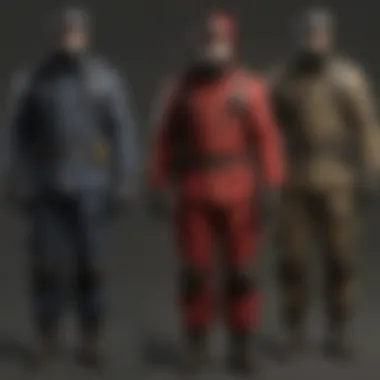
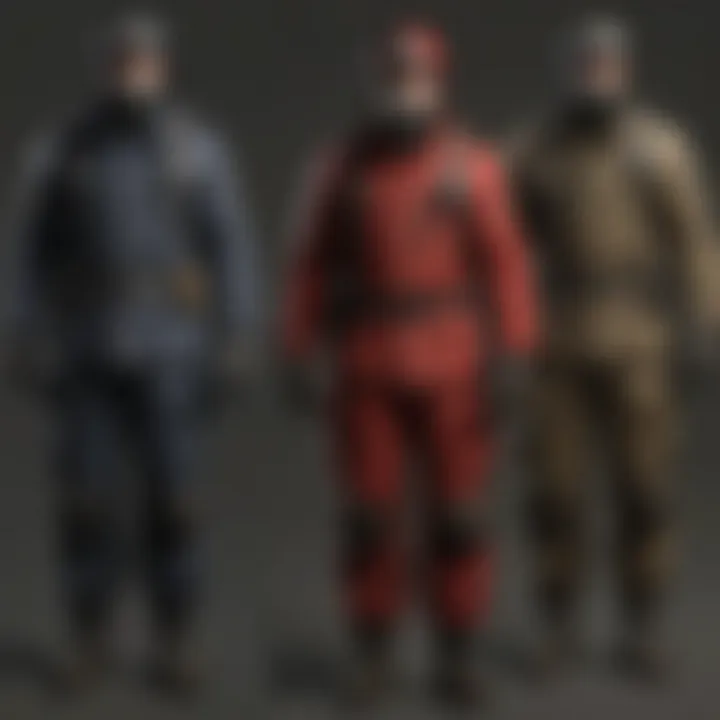
Intro
Firefighter uniforms hold both functional and symbolic significance in emergency response. They are critical for the safety of firefighters as they perform their duties in extreme conditions. The development of these uniforms evolved over decades, shaped by advancements in materials and technology. Understanding their evolution helps to appreciate not just the gear, but what it represents for those who wear it and the public they serve.
Historical Context
Historically, firefighter uniforms have reflected the society's attitude toward safety and protection. Early uniforms were simple and often consisted of wool and leather. These materials, while durable, offered limited protection against the heat and flames. Over time, as fires became more dangerous, the need for better protective gear became evident.
Firefighting in the 19th Century
The 19th century marked pivotal improvements in firefighting gear. The introduction of rubberized materials began transforming the composition of uniforms. This development improved waterproofing, essential for firefighters dealing with various hazards on the scene.
The Rise of Bunker Gear
By the mid-20th century, firefighter uniforms underwent a significant transformation with the introduction of bunker gear. This incorporates a durable outer shell, thermal liner, and moisture barrier. Such innovations not only protect from flames but also manage heat and moisture, crucial during long hours in intense situations.
Design Components of Firefighter Uniforms
Today's firefighter uniforms integrate various design components to enhance safety and functionality. Key features include:
- Reflective Trim: Improves visibility during nighttime operations or low-light conditions.
- Thermal Protection: Insulating layers that guard against extreme heat.
- Lightweight Fabrics: Reduce fatigue during extended use.
These design elements collectively contribute towards the overall effectiveness of firefighting uniforms.
Materials Used
The evolution of materials in firefighter uniforms has been remarkable. Early materials had limitations, but innovation has led to fabrics like Nomex and Kevlar that provide exceptional heat resistance and durability. These synthetic fabrics are energy-absorbing and can withstand high temperatures, enhancing the safety of firefighters.
Technological Impact on Uniform Evolution
Advancements in technology continue to reshape firefighting uniforms. Enhanced materials improve breathability and flexibility, while integrated communication devices allow for better coordination among team members. Additionally, many uniforms now feature moisture-wicking properties to keep firefighters cool and dry.
The Future of Firefighter Uniforms
Trends point towards even greater integration of technology in firefighter uniforms. Smart fabrics that can monitor health metrics, as well as materials that offer enhanced protection against chemicals and particulates, are on the horizon. Adoption of these innovations will further advance the safety and efficiency of firefighting operations.
Psychological Implications
Uniforms also carry psychological weight. They contribute to the identity of firefighters, instilling a sense of pride and purpose. This perception plays a significant role in how the public views firefighters. Uniforms create a bond, symbolizing trust and security within the community.
End
The evolution of firefighter uniforms reflects ongoing advancements in safety, materials, and technology. As these uniforms continue to evolve, they will play an increasingly vital role in protecting those who bravely confront dangers to safeguard lives. Understanding their significance is crucial in appreciating the dynamics of modern firefighting.
Historical Overview of Firefighter Uniforms
The topic of firefighter uniforms holds great significance in understanding the evolution of safety measures and operational effectiveness within firefighting. Firefighter uniforms are not merely garments; they are a vital aspect of the identity of fire service personnel while offering essential protection during hazardous conditions. Examining the historical framework of these uniforms provides insight into the challenges and advancements made throughout time. It lays the groundwork for appreciating modern designs that focus not only on safety but also on comfort and performance.
Origins of Firefighting Gear
Firefighting gear traces its roots back to the earliest forms of organized firefighting, which can be seen in ancient civilizations. In ancient Rome, for example, firefighters, known as the Sextus Pompeius, wore simple leather tunics for protection against heat and flames. These rudimentary outfits, although effective at the time, lacked the advanced features that are standard today. The early firefighters relied heavily on leather for its natural heat resistance.
The choice of material defined the primordial gear; however, comfort was still a concern. The lack of insulating properties made them uncomfortable to wear for long periods. As the understanding of fire dynamics grew, so did the approach to protective clothing.
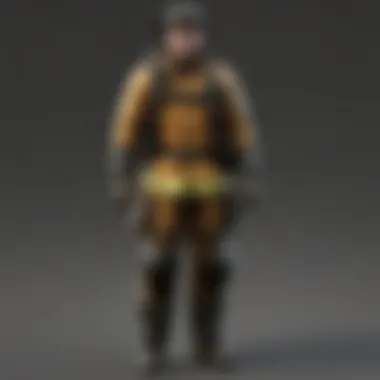
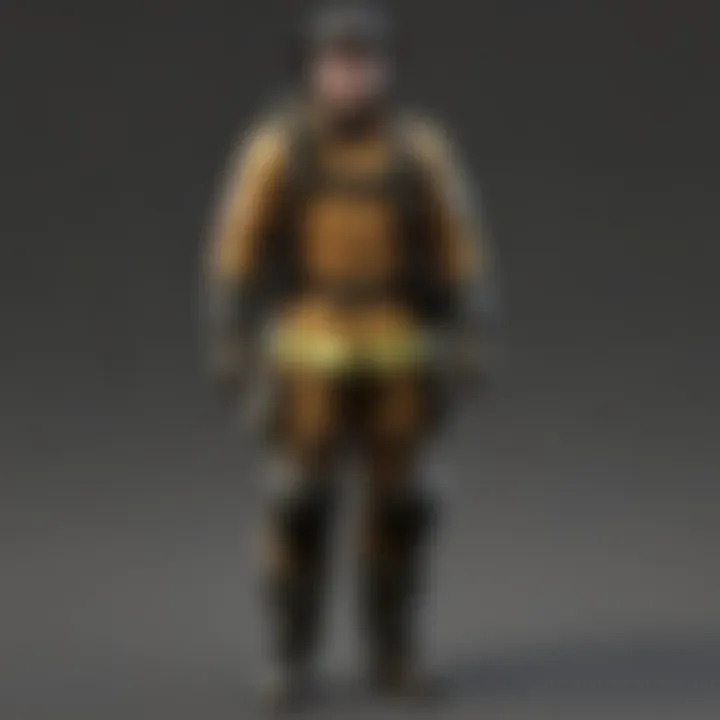
Evolution through the Centuries
Early Models
Initially, firefighters wore garments that were practical yet basic. Early models primarily included long wool cloaks and leather hats. These items offered basic protection but were not specifically designed for firefighting tasks. One key characteristic of these early models was their adaptability to different climate conditions, providing warmth in cold weather while being relatively lightweight.
However, the unique feature of these models lay in their ability to shield firefighters from debris and smaller flames. This made them a popular choice at the time, though they had significant limitations in terms of moisture and extreme heat resistance.
Impact of Industrialization
The Industrial Revolution catalyzed a shift in firefighting gear, bringing about advancements in material science and garment construction. During this period, new materials like rubber and canvas became prevalent. The incorporation of these materials led to more durable and water-resistant uniforms. A significant characteristic of this period's gear was the introduction of protective fire retardant chemicals.
As urbanization accelerated, the need for improved safety protocols grew. The unique feature of industrial-age firefighting uniforms was their enhanced resilience to the intense heat and dangerous smoke associated with fires within factories. However, these improvements came with disadvantages, such as increased weight and limited breathability, affecting the mobility of firefighters on the job.
Modern Adaptations
Modern adaptations of firefighter uniforms focus heavily on integrating advanced fire-resistant materials and ergonomic designs. Bands of reflective material, essential for visibility in smoke-filled conditions, became notable additions. Another critical characteristic of these modern uniforms is their layering system, which promotes both insulation and moisture-wicking capabilities.
The unique features in contemporary designs include built-in thermal protection and high-visibility elements to keep firefighters safe during night operations or low-visibility scenarios. These developments have drastically improved operational performance and firefighter safety, making modern uniforms indispensable tools in firefighting efforts.
Cultural Influences on Uniform Design
Cultural aspects have significantly influenced firefighter uniform designs. From color choices to helmet styles, historic and cultural contexts play an essential role. For instance, some cultures emphasize the use of traditional colors that symbolize bravery and service, while others adopt designs inspired by modern art. As firefighting evolves into more diverse fields, uniforms continue to reflect societal values and advancements.
Understanding how cultures shape these vital safety garments provides a broader perspective on the significance of firefighter uniforms. This aspect of uniform design indicates not merely a function but a representation of identity within the firefighting community.
Key Components of Firefighter Uniforms
The construction of firefighter uniforms entails numerous components that are crucial for safety and performance in emergency situations. These key elements are not merely functional, but they also contribute to the identity and professionalism of the firefighting profession. Each component has a specific role in providing protection and comfort, which are essential for dealing with hazardous conditions.
Jackets and Pants
Outer Layer Functionality
The outer layer of jackets and pants serves as the first line of defense against external threats like flames and hazardous materials. This layer is typically made from materials that are flame-resistant, which is significant in controlling the risk of burns. A key characteristic of outer layer functionality is its ability to withstand extreme temperatures, offering critical protection to firefighters.
This clothing is often constructed with a specific weave pattern that enhances durability. This durability is essential as uniforms endure abrasions and harsh environments. One unique feature involves the incorporation of reinforced stitching in high-stress areas. This feature extends the life of the garment but may slightly increase its cost. The benefits of this outer layer in decreasing burn injuries underline its importance in uniform design.
Insulating and Moisture-Proofing
Insulating and moisture-proofing are essential elements that work hand-in-hand to ensure a firefighter's safety. Insulation adds warmth during potentially cold and wet situations, while moisture-proofing helps in keeping the body dry. The key characteristic here is that these features significantly enhance comfort and performance.
By incorporating moisture-wicking materials, uniforms can transport sweat away from the skin, maintaining a stable body temperature. A unique advantage of this combination is that it can prevent hypothermia during prolonged exposure to firefighting conditions. However, if not adequately balanced, these features could lead to overheating, which is a consideration that must be evaluated during the design phase.
Helmets
Protective Features
The helmet stands as a vital component in firefighter gear. Its protective features are unsurpassed, as it shields firefighters from falling debris, heat, and potential impacts. A key characteristic of these helmets is the use of high-impact resistant materials like polycarbonate or fiberglass. These materials contribute significantly to the overall longevity and reliability of the helmet.
Additionally, helmets often come equipped with faceshields or visors, providing another level of safety against heat radiance and flying particles. The unique feature of adjustable chinstraps allows the helmet to fit securely, ensuring it remains in place during activities. This aspect deepens the overall effectiveness, while any weakness in design could cause an increased risk of injury.
Design Variations
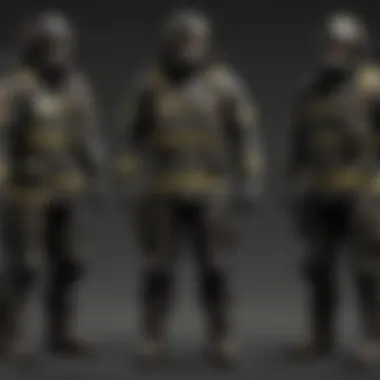
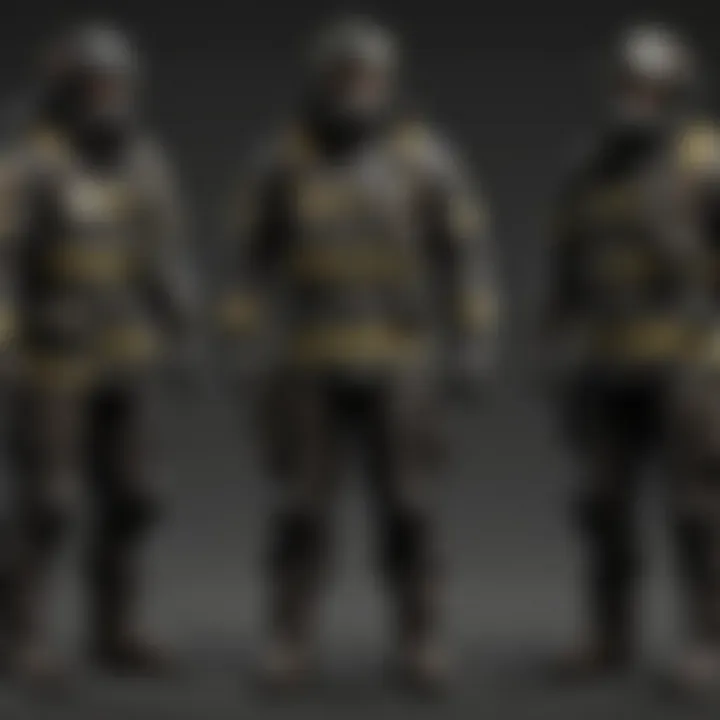
Design variations of helmets bring distinct advantages tailored to different firefighting environments. For example, some helmets are designed with built-in communication devices, beneficial for coordination during emergencies. Another variation involves helmets with built-in LED lights, which enhance visibility in dark conditions.
The key characteristic of these design variations is adaptability for specific situations. Each variation aims to address unique challenges in firefighting. However, increased complexity often raises both the weight of the helmet and the potential for malfunction. Therefore, achieving the right balance between function and practicality is essential in helmet design.
Footwear
Importance of Safety Standards
Footwear in the firefighting world is non-negotiable when it comes to safety standards. Firefighter boots must adhere to strict regulations concerning slip resistance, heat and puncture resistance, and electrical hazard protections. The primary feature that defines the importance of safety standards is the ability to minimize foot and leg injuries during emergency responses.
Well-designed firefighters boots commonly use materials like rubber and leather, ensuring both flexibility and durability. While such features enhance functionality, the emphasis on safety can sometimes lead to bulkier designs, which may affect mobility. Thus, compliance with safety standards must be weighed against ease of movement.
Types of Firefighter Boots
Firefighter boots come in various types to match distinct operational demands. There are structural boots meant for direct confrontation with flames and wildland boots suited for rough terrain. A significant characteristic of these boots is their differing features, like higher ankle support or reinforced toe caps.
One unique aspect of firefighter boots is their waterproofing capabilities, crucial for protecting against exposure to water and hazardous materials. This enhances the overall functionality by ensuring the firefighter remains dry and comfortable. Although more specialized boots can increase costs or necessitate adjustments in firehouse procedures, the benefits often justify these changes.
Firefighter uniforms embody essential safety features and contribute to an individual's identity within the fire service, highlighting the profound role they play in the profession.
Materials Used in Firefighter Uniforms
Understanding the materials used in firefighter uniforms is crucial as these elements directly influence the performance and safety of firefighters. The choices made in material selection can have significant implications on various aspects, including thermal protection, comfort, and durability.
Fabric Technologies
Nomex and Kevlar
Nomex and Kevlar are two of the most recognized materials in firefighter gear. They are inherently flame-resistant and offer protection against heat and flames. Nomex, developed by DuPont, provides excellent thermal stability. It does not melt or drip when exposed to high temperatures, making it a preferred choice for fire service apparel.
Meanwhile, Kevlar, also from DuPont, is known for its strength and durability. It is often used for protective gear due to its lightweight nature and ability to withstand extreme conditions. The key characteristic of these materials is their ability to provide both protection and comfort.
One unique feature of Nomex is its ability to maintain its protective qualities even after multiple washes. However, its relatively lower moisture-wicking capacity can be a disadvantage in extremely high-humidity situations. Conversely, Kevlar excels with its protective capabilities, but its cost may limit its usage for certain applications.
Innovations in Fireproof Fabrics
Recent advancements in fireproof fabrics have introduced new possibilities for increased safety. Developing technologies focus on blending materials to enhance their overall performance. For instance, combining Nomex with other synthetic fibers can improve both breathability and moisture resistance.
The key characteristic here is the ongoing innovation that transforms the static quality of standard fabrics into dynamically safe options for firefighters. A unique feature of these innovations is the lightweight nature of the new fabrics while maintaining high protection levels. This adaptability can provide greater freedom of movement, making firefighters more effective on the job. Yet, the challenge remains to balance cost, durability, and performance in these advanced materials.
Breathability and Comfort
Breathability and comfort are essential in firefighter uniforms. Firefighters often work in high-stress environments, and their ability to move freely affects performance. Moisture management is vital. Fabrics that wick sweat away from the body can significantly enhance comfort levels. The combination of breathability with protective qualities can help in maintaining focus and endurance during operations.
Durability vs. Performance
In evaluating firefighter uniforms, it's crucial to consider the tension between durability and performance. Durable materials resist wear and tear over time. However, if they compromise comfort or movement, it can hinder a firefighter's effectiveness. Therefore, the selection of materials involves careful consideration. Firefighters need uniforms that can withstand extreme conditions while allowing flexibility and ease of movement.
"The right materials in firefighter uniforms can mean the difference between life and death in the line of duty."
Technological Advances in Firefighter Uniforms
Technological advances play a pivotal role in the evolution of firefighter uniforms. The importance of this topic lies in the enhanced safety, operational efficiency, and effectiveness that modern technologies provide. As firefighting becomes increasingly complex, the integration of advanced materials and technologies into uniforms is essential to protect the lives of firefighters while improving their performance in emergency situations.
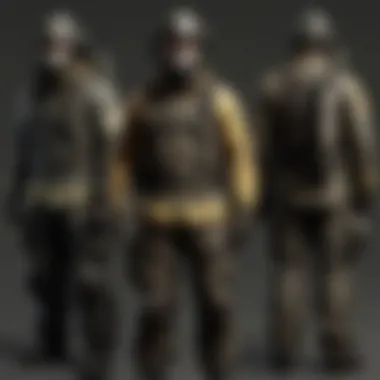
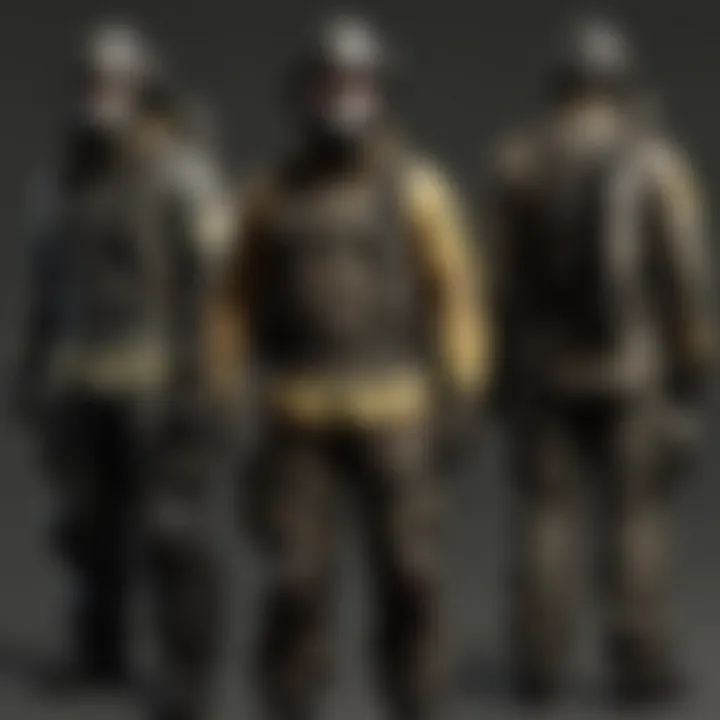
Smart Uniforms and Integrated Technology
Wearable Technology
Wearable technology refers to devices or sensors incorporated into the firefighter's uniform, allowing for real-time monitoring of vital signs and environmental conditions. This innovation contributes significantly to ensuring safety and situational awareness. One key characteristic of wearable technology is its ability to track physical data such as heart rate and temperature, which can help identify distress in firefighters during demanding operations. This technology enhances decision-making processes in life-threatening circumstances, proving to be a beneficial choice for modern firefighting practices.
The unique feature of wearable technology is its connectivity to communication devices. This allows team members to be constantly updated about a firefighter's health status or location. However, challenges include the potential weight of devices and their durability under extreme conditions. These factors can affect the overall usability of such technologies in the field.
Impact on Operational Efficiency
The impact of integrated technology on operational efficiency cannot be overstated. It enhances the ability of firefighters to coordinate effectively during emergency responses. A critical characteristic of this integration is the use of real-time data analytics, which informs strategic decision-making. This data can include building layouts, hazard locations, and crew dynamics, which are crucial in high-stakes environments like fires.
One unique feature of this technology is the ability to update and share information among team members through mobile applications or heads-up displays. This advancement allows for streamlined communication, a fundamental aspect of firefighting that can significantly improve outcomes. A potential disadvantage, however, is the reliance on technology that could be compromised in extreme situations, such as from fire or water damage.
Thermal Imaging and Its Role in Design
Thermal imaging is another crucial advancement in firefighter uniforms. Thermal imaging cameras embedded in the gear allow for the detection of heat signatures, facilitating navigation through smoke-filled environments. This technology improves not only safety but also mission success rates. Firefighters can find victims and make informed decisions about where to direct their efforts.
As a result, incorporating thermal imaging into uniform design modernizes firefighting practices. The advancements in camera size and heat sensitivity have made this technology widely adopted. However, training is essential to ensure that firefighters can effectively use this equipment while in the heat of operations.
Psychological Impact of Firefighter Uniforms
The psychological impact of firefighter uniforms extends beyond mere functionality; it encompasses identity, confidence, and public perception. Firefighting is a high-stress profession, where the uniform serves not just as protective gear, but as a symbol of courage and valor. The way firefighters perceive their uniforms can significantly affect their performance and mental wellbeing on the job.
One essential factor to consider is how uniforms contribute to a firefighter's identity. Donning the uniform can instill a sense of belonging among personnel. This shared attire fosters camaraderie within a team and connects individuals to a legacy of service. The design, colors, and insignia represent both the individual’s role in the department and the agency's values. When firefighters wear their uniforms, they often feel a stronger commitment to their duties.
Uniforms and Identity
Firefighters often describe their uniforms as a badge of honor. This is not just about looking the part; it's about feeling equipped to handle the challenges they face. The act of putting on a uniform can trigger a mental shift. They transition from their personal lives into their roles as protectors and responders.
- Role Reinforcement: Wearing a uniform reinforces the firefighter's role. It serves as a constant reminder of the responsibilities tied with their position.
- Community Perception: Firefighter uniforms also affect how they are perceived by the community they serve. Citizens often associate the uniform with heroism and trust.
- Emotional Connection: Over time, uniforms can evoke strong emotions. Some firefighters recall their first day on the job and the pride they felt wearing the uniform. This personal history deepens their connection to the uniform itself.
Public Perception of Firefighters
The public perception of firefighters is crucial for community trust and support. The uniform plays a significant role in shaping these perceptions. People see uniforms as symbols of safety, professionalism, and authority. When citizens witness firefighters responding in full gear, it often invokes feelings of reassurance.
"The uniform is a powerful visual tool. It conveys authority and trust. People tend to feel safer knowing firefighters are well-prepared to handle emergencies."
- Trust Factor: The uniform creates an expectation for professionalism. Citizens trust firefighters because the uniform represents dedication and training.
- Media Representation: Firefighter uniforms are prominent in films, advertising, and television. This constant representation can enhance the public's view of firefighters as heroes.
- Expectations in Emergencies: During crises, people may turn to firefighters for help and are comforted by their presence in uniform. It projects competence and confidence, essential in emergency situations.
Future Trends in Firefighter Uniform Design
As the field of firefighting evolves, so too does the design of uniforms worn by professionals. Future trends in firefighter uniform design will prioritize safety and comfort, while integrating cutting-edge technology. These innovations are crucial not only for the well-being of firefighters but also for improving overall operational efficiency. Emphasizing sustainability and customization signals a shift in how uniforms can enhance both function and personal expression.
Sustainability in Uniform Production
Sustainability is becoming a focal point in the production of firefighter uniforms. The fire service faces increasing pressure to reduce its environmental impact. This can be achieved through better sourcing of materials and implementing sustainable practices in production.
- Recycled Materials: Many manufacturers are exploring the use of recycled fabrics. This practice reduces waste and lowers the demand for virgin materials. Fabrics made from recycled polyester or nylon significantly lessen the ecological footprint.
- Eco-Friendly Treatments: The use of environmentally safe treatments for water and flame resistance is on the rise. Firefighter uniforms that utilize such treatments help ensure that they are safer for both the firefighters and the environment.
- Lifecycle Considerations: Emphasizing durability means that uniforms will last longer, thus contributing to less frequent replacements. This not only saves costs but also reduces waste.
Ultimately, implementing sustainable practices will become more than just a trend; it will be a necessity for the fire service moving forward.
Customization and Personalization
As individuality in the workplace gains importance, customization and personalization of firefighter uniforms will likely grow in popularity. The ability to tailor uniforms to fit the needs of individual firefighters enhances both comfort and efficiency.
- Fit and Comfort: Firefighters come in diverse sizes and shapes. Customizing fit can enhance mobility, reducing the risk of injuries. This can be especially critical during high-stress situations where every second counts.
- Functional Features: Adding specific functionalities to uniforms such as additional pockets or tool holders can cater to the unique requirements of different firefighting scenarios. Tailored designs will allow firefighters to carry necessary equipment more efficiently.
- Aesthetic Expression: As uniforms become more personalized, there is an opportunity for firefighters to express their individuality. This can enhance esprit de corps within teams as members showcase a sense of unity while also celebrating personal identity.
"The next generation of firefighter uniforms will embody both function and personal expression, reflecting the identity and commitment of those who wear them."
Incorporating these trends will require a collaborative effort among manufacturers, fire departments, and the firefighters themselves. The dialogue around future trends in firefighter uniforms is essential, as it sets the stage for the next evolution in this vital gear.





